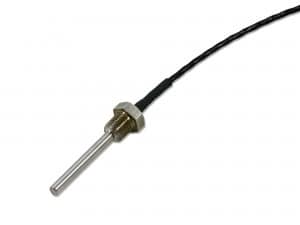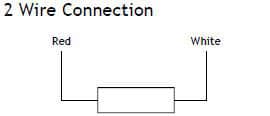PVC is the insulation of choice for almost any cable we see around us in our day-to-day lives. Everything from mains cable through to leads on headphones and mobile phones are invariably PVC. In general, PVC is not a very commonly used cable for many temperature applications due to its limited operating range. Standard PVC is only suitable for use in the range -10 to +70°C. A high-temperature version more commonly used in this industry extends the upper limit to 105°C. There are still plenty of applications that fall within this range and if the application permits the use of PVC then it is the lowest cost option.
If flexibility is required, then silicone rubber is the best choice. Any cable which uses silicone rubber is more flexible than almost any other kind plus it has a very useful operating temperature of -60 to +180°C. Special versions can be made to operate to 240°C making it a viable alternative to more expensive Teflon based products.
Silicone rubber is an excellent material to bond to and it is the material of choice for probes which are required to be moisture proof.
Probably the most versatile cable used in temperature sensor manufacturing, PTFE and more often PFA are used to deal with a wide range of application requirements. PTFE is a tape insulation which is wrapped onto the cable and sintered whilst PFA is an extruded form. These materials form part of a group of materials called Fluoropolymers denoting the use of Fluorine in the composition of the material. Others include FEP, ETFE (Tefzel) and FPM/FKM (Viton).
The operating range for these materials is from -268°C (5K, -450°F) and up to +250°C. Notably, the material retains good flexibility down to -75°C but below this we recommend the cable is used statically.
As well as a wide temperature range, the materials are well known for being practically chemically inert and they can be used with confidence in the presence of almost any substance without risk of degradation.
The material has an extremely low coefficient of friction (the third lowest of all known materials) and is also extremely hydrophobic. This means it repels water and other substances making it extremely difficult to bond to. Whilst we possess the capability to chemically etch fluoropolymer materials prior to potting we recommend selecting other materials where possible for moisture proof assemblies.
Stainless Steel Armour/Conduit
In some applications it is necessary to provide additional mechanical protection to the cable. The best way of achieving this is to use a stainless steel flexible armour or conduit. This is available in various grades of stainless steel to meet cost and durability requirements. Whilst the armour provides mechanical protection it does not provide any additional waterproofing.






